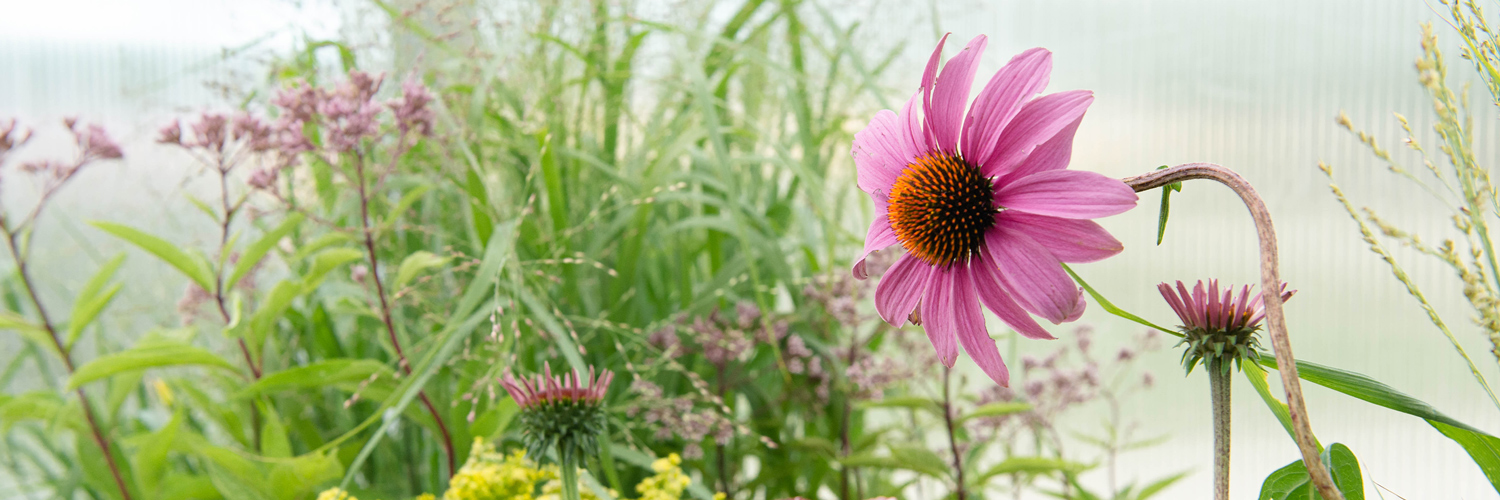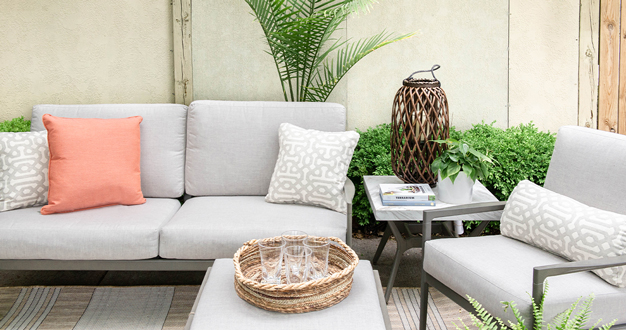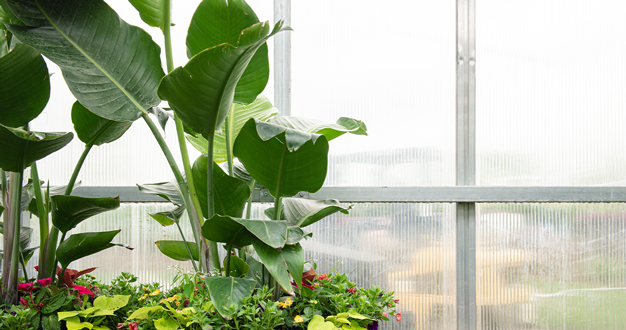
When you’re looking for colorful new perennials for your landscape, there’s good reason to look first to our native plants of the Great Plains. Whether you just want some added blooms or you’d like to create an outdoor space inspired by our beautiful, natural landscapes, these dependable plants offer both resiliency and valuable resources for local birds, pollinators, and other biodiversity. Here, we share a few of our favorite blooming perennials for a Great-Plains-inspired landscape in your own backyard.
Why Native?
With native plants in your landscape, you’ll never be lonely. Serving as the foundation of our natural ecosystems, native plants are uniquely qualified to support our local birds, insects, and other wildlife, providing exactly the right resources – food, shelter, nesting sites – that wildlife look for and depend on for their survival. And because they’re adapted to our local soil, topography, and climate, native plants need a lot less “coaxing” with extra water, fertilizer, soil amendments, and other maintenance than non-native plants often require. Native plants even save you time and money in pesticide treatments by attracting native beneficial insects that attack the damaging ones.

Milkweed
When we think of milkweed, we often think of the splendid monarch butterfly who depends on this group of plants as the only ones suitable to lay its eggs on and to feed its growing young caterpillars. If supporting the monarch – whose numbers have declined in recent years partly because of habitat loss – was the only reason to plant milkweed in your landscape, that would be enough. But milkweed has a lot to offer in other ways as well. Dense clusters of fragrant, starry-shaped blooms sit on top of sturdy stems in shades of pink and purple. Their nectar and pollen offer food for lots of butterflies and beneficial insects – including adult monarchs. The textured foliage is soft to the touch and when blooming is done, it’s fun to see the large pods open up to watch the thousands of seeds on long, silky tails float away on the breeze. In our Nursery Yard collection, you’ll find butterfly milkweed and swamp milkweed ‘Cinderella’ ready to plant in the landscape.
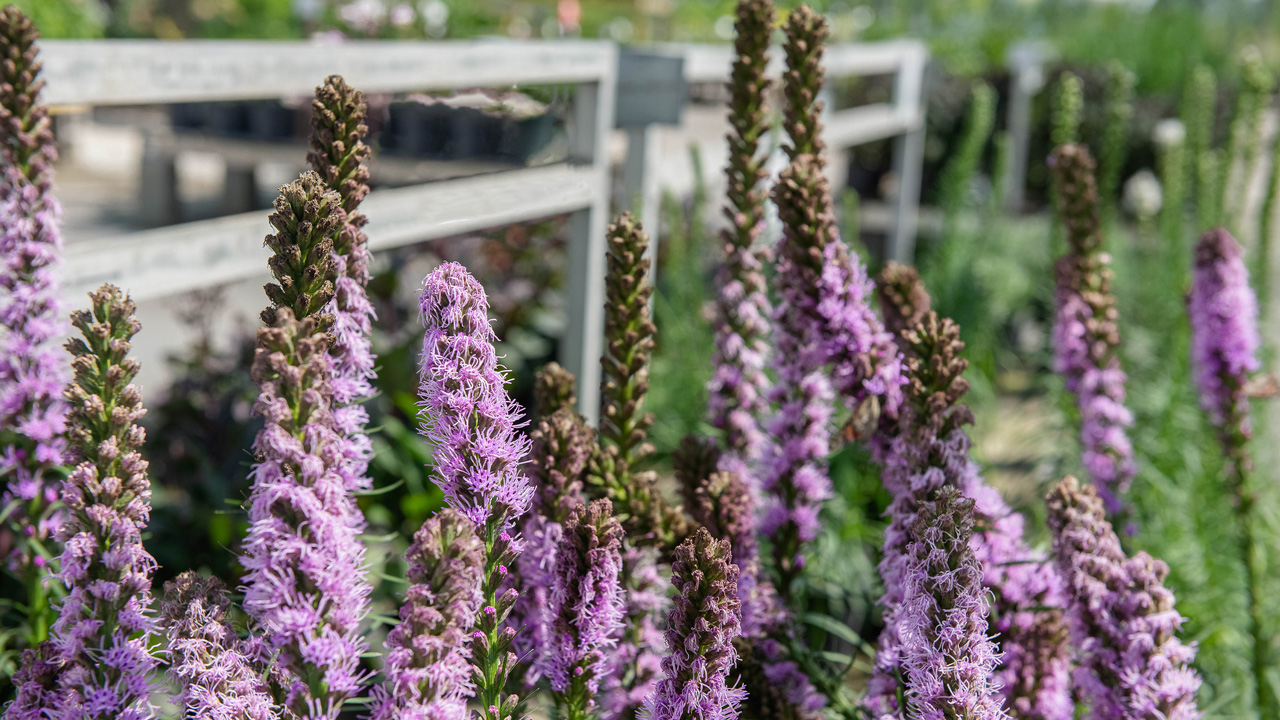
Liatris
Liatris is a clump-forming perennial featuring slender, cigar-shaped flower spikes covered in tiny, fluffy purple blooms. A moisture-lover, liatris is native to wet meadows and marsh edges – so it’s a perfect choice for sunny rain gardens and other wet areas. The cultivar ‘Kolbold’ is a somewhat smaller liatris that stays two to three feet tall and makes a beautiful addition to sunny borders where it attracts butterflies and hummingbirds like a magnet.
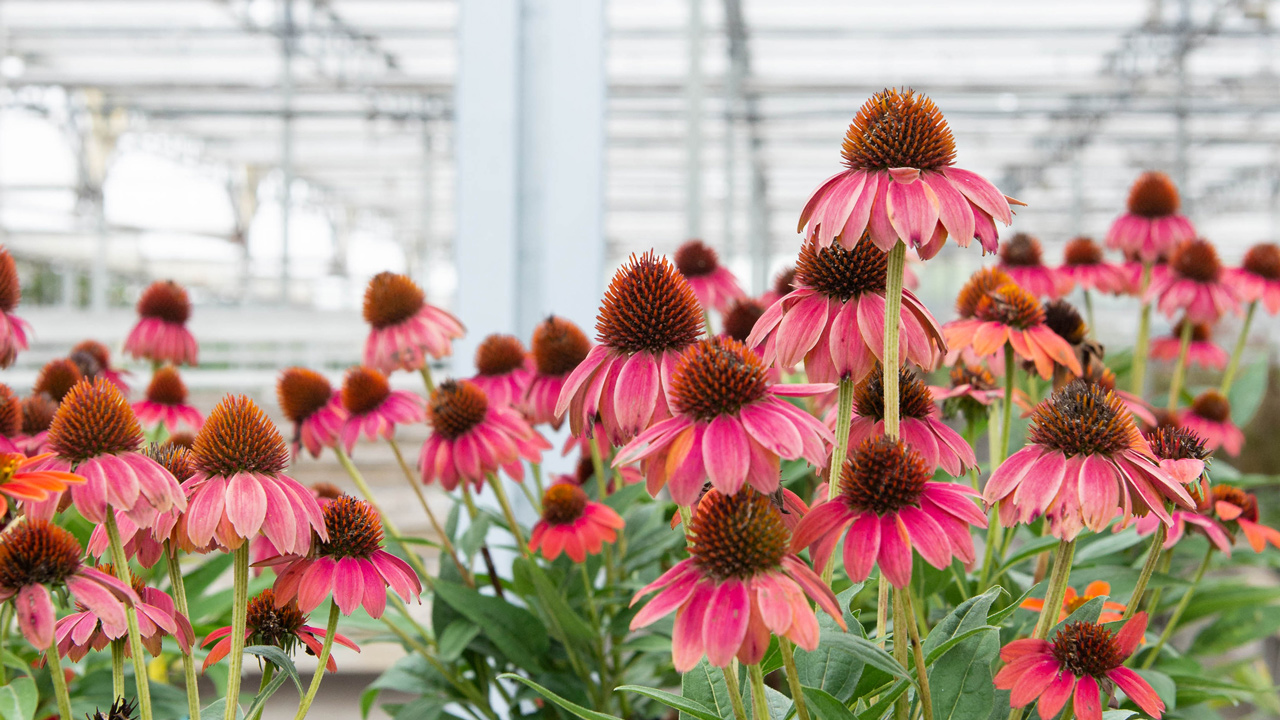
Coneflower
A rugged prairie native, purple coneflower is used to holding its own in a sea of tall waving grasses and other wildflowers. The original species sports thin, dark pink-lavender petals that reflex downward from a prominent, bristly center cone. Such color and accessible food resources make it a popular stop for bees, butterflies, and native birds – who especially enjoy the dried seed heads in the winter. Like many prairie dwellers, coneflower is tough and drought tolerant too. Hybridized cultivars of coneflower come in a range of colors including shades of purple, red, yellow, and white. The cultivar ‘Baja Burgundy’ is new – its red-magenta blooms stand on eighteen-inch stems and attract all kinds of beneficial insects.
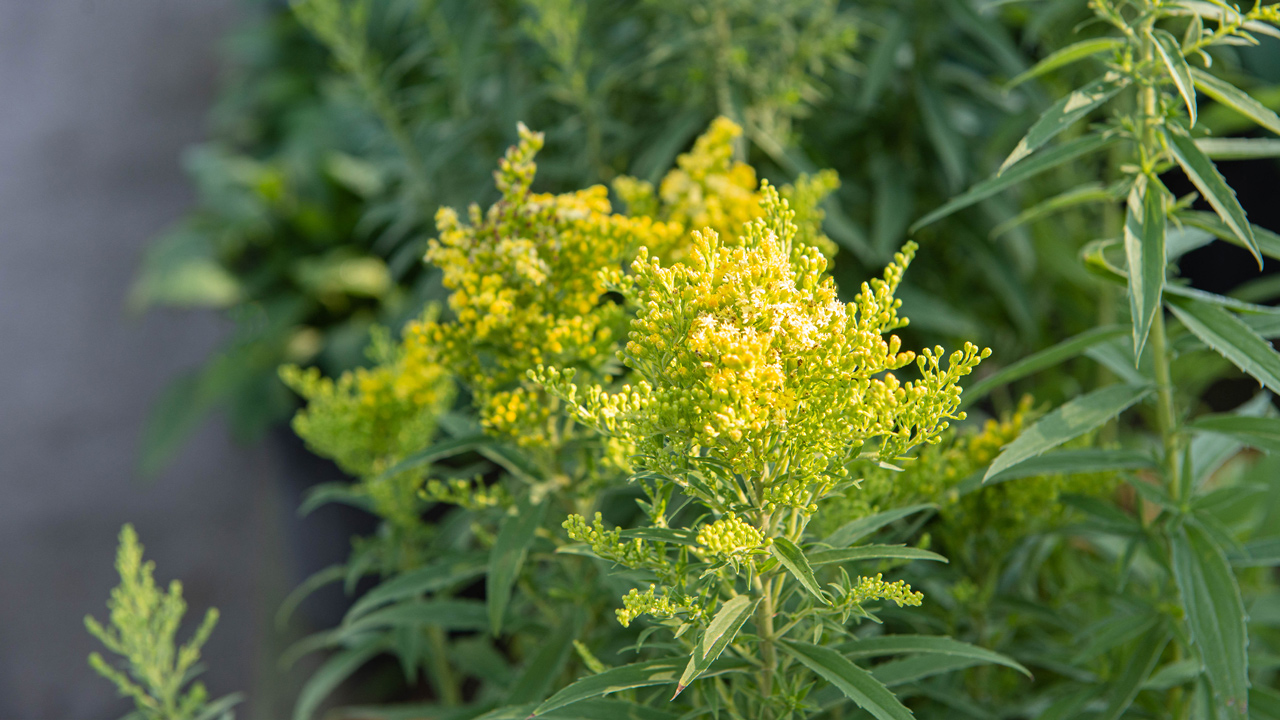
Goldenrod
As Nebraska’s state flower, goldenrod represents us well with its cheerful golden blooms that seem to take over the natural landscape in late summer. A prairie native, the original species goldenrod can get kind of tall and lanky, but shorter, more compact cultivars like ‘Fireworks’ and ‘Little Lemon’ can provide the sunshine yellow in your garden but in a tidier size and shape. And goldenrod is a favorite for local wildlife too. Native birds love the seeds – while you enjoy the interesting texture they bring to your fall and winter landscape. Butterflies and pollinators enjoy finding this recognizable and resourceful treat in your garden too.

Rudbeckia
About the time summer really hits its stride in July, the prairie native rudbeckia begins popping out in thousands of charming golden discs across sunny meadows, roadsides, and woodland edges. This classic black-eyed Susan offers a showy display of bright petals radiating outward in a ring around a dark brown, coned center. In the landscape, rudbeckia is a sturdy plant and easy to grow with long-lasting blooms almost covering a mound of coarse, hairy stems and foliage. The cultivar ‘American Gold Rush’ is one of our favorites and for something a little more compact, try ‘Little Goldstar’ – a fourteen-inch mound of concentrated sunshine for your garden.

Baptisia
Baptisia – also known as blue false indigo – blooms in May and June with abundant lupine-like blooms on tall flower spikes, three to four feet tall. Butterflies love the pretty purple flowers while we can also appreciate the charming mound of three-leafed foliage that looks a lot like a large-leafed clover. In the fall, its ornamental black seed pods give another season of interest to the landscape.
Photo by // Williumbillium
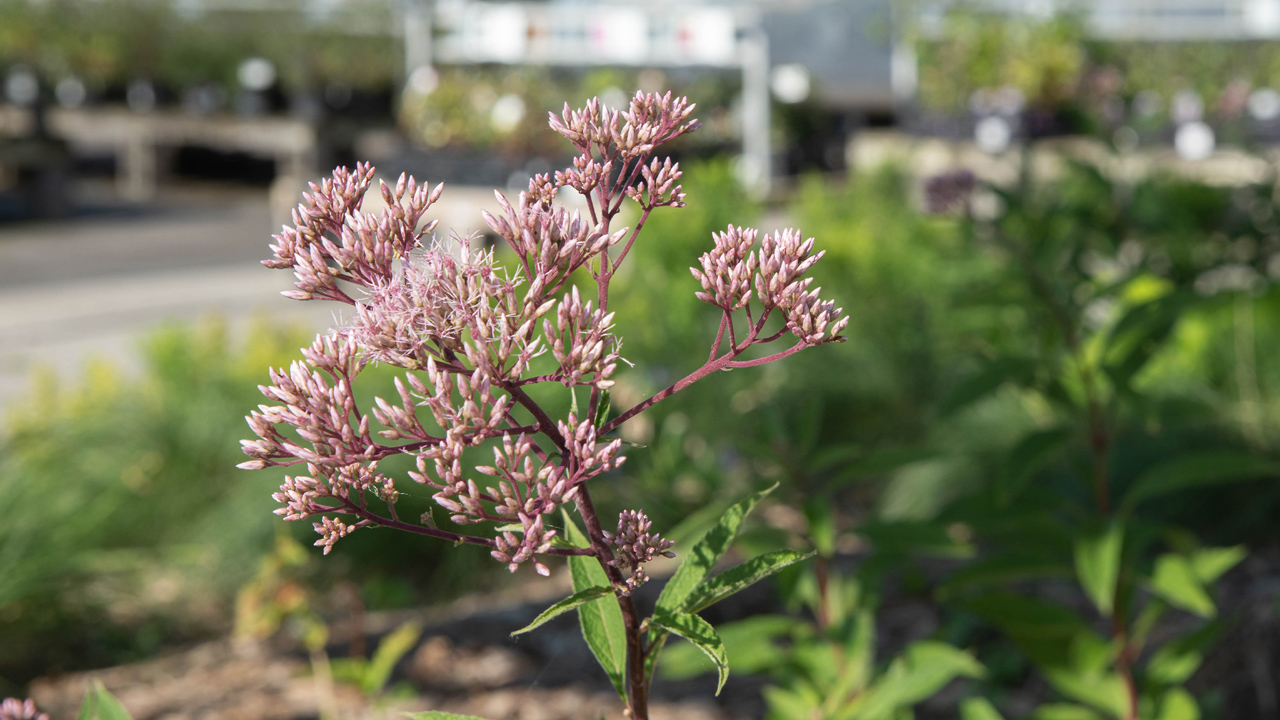
Joe-Pye Weed
Don’t let that “w-word” in the name fool you – joe-pye weed is anything but “weedy,” and it’s a valuable member of both cultivated landscapes and local wildlife communities. As a landscape plant, joe-pye weed blooms with broad, domed clusters of sweetly scented purple-pink florets above sturdy stems and narrow, lance-shaped foliage. In its native habitat, joe-pye weed thrives in sunny, wet meadows and by ponds, so it’s happy to live with us in our rain gardens, around water features and in lower, wetter areas of the landscape. And because it blooms in the late-summer and early fall when many other landscape blooms are beginning to fade, joe-pye weed is a particularly valuable resource for butterflies, bees, and other pollinators.
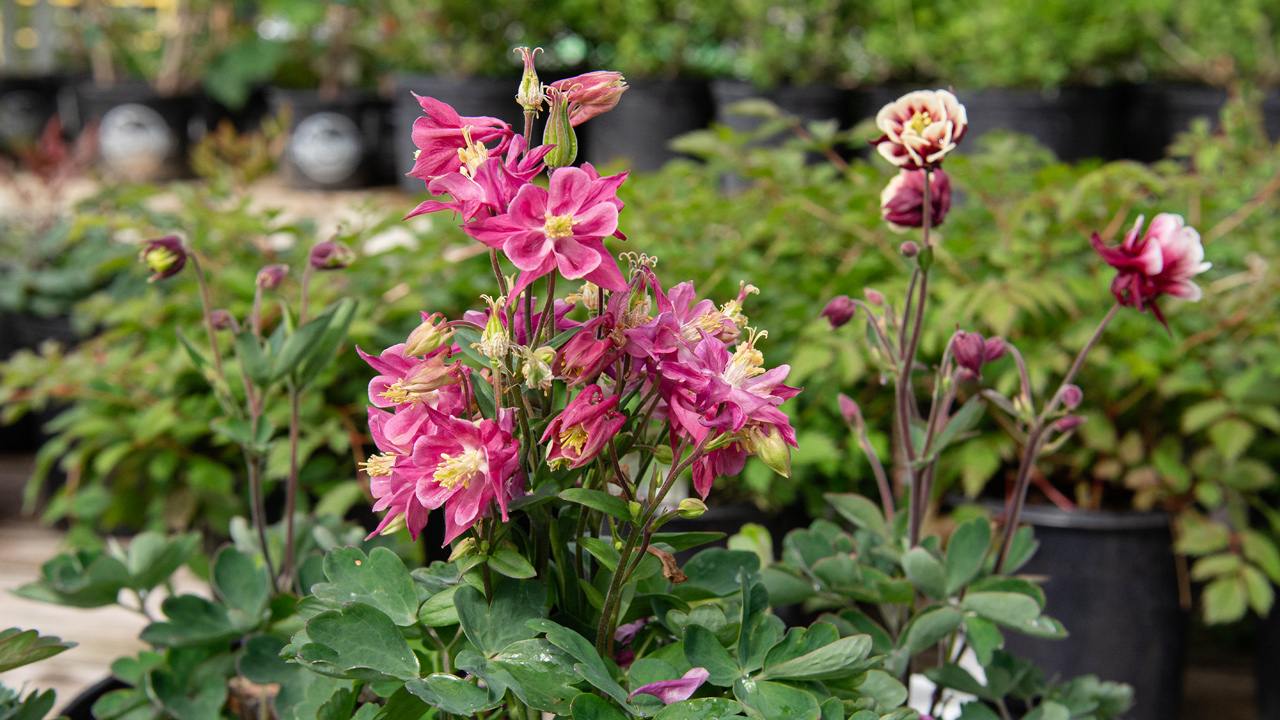
Columbine
In early spring, columbine provides some of the first perennial blooms to gardeners who may be yearning to see new growth and color in their landscapes. Each columbine bloom is an intricate collection of petals and sepals arranged in a cup-like structure – sort of like an airy daffodil. Long, characteristic spurs out the back of the bloom complete its fascinating look. And columbine likes part sun – so it brings cheerful color where it’s sometimes hard to find in the landscape.
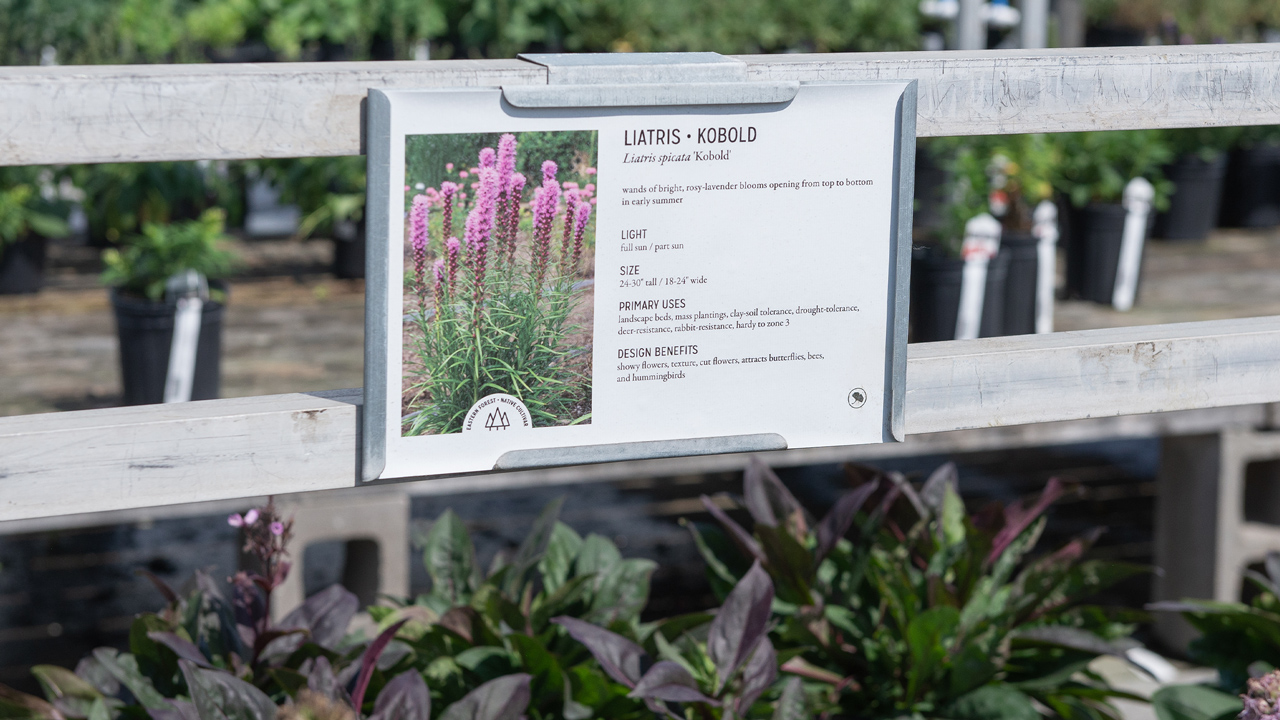
Look for Our Native Plant Logos
If you’re interested in adding more native plants to your landscape, stop by our Nursery Yard and look for the native plant logos on our plant signage. Or if you need help, just ask. We’d love to help you find the perfect ones, and we’re always here to answer any questions you might have about creating an easy-care landscape that supports the birds, pollinators, and other wildlife in our urban ecosystem.

